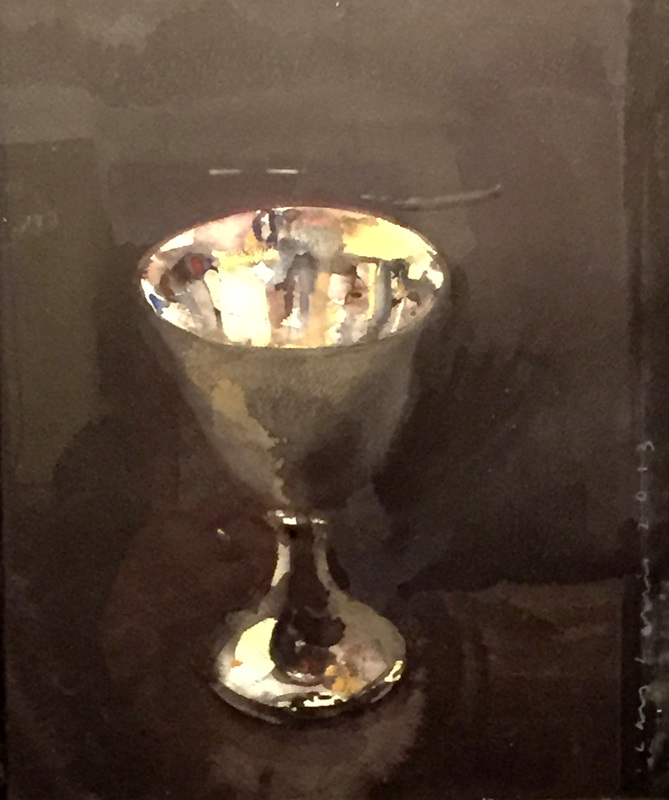Whatever your style, as a watercolor painter you are an advocate of the beauty of the medium. When you have an opportunity to give some control back to the paint, it is a shame not to take advantage of it. Every scene comprises passages that can be painted in a carefree manner and others that require more careful work. Recognizing which is which is part of a watercolorist's training.

Most of this Andrew Wyeth study is painted according to very broad guidelines. The texture of the wall could be flipped upside down and it would still be a reasonable representation of a rough stucco wall. The window, on the other hand, is much more carefully painted. Care was taken to keep the rectangle upright, and to reserve the thin mullions. It is the careful part that gives meaning to the carefree. Without the window the wall would be difficult to recognize as a wall.
Do you think Wyeth knew this? I'm pretty sure he did. He wants to engage his viewers by giving us the means to see the paint as both subject mater and abstract marks on paper. I think he also takes pleasure in displaying the nature of the paint. We get to see the fluidity and transparency of the watercolor as much as we get wrapped up in the illusion of accuracy.
Look at the right half of this painting. It's easy to read it as a depiction of a tree and some space. Imagine removing the tree trunk. the tree would become a grey shape without identity, in the same plane as the other grey shape beside the house. Wyeth knew that the trunk would provide the meaning. The illusion of space and the identities of the shapes rely on that single vertical stroke.
These photos provide opportunities to be carefree with paint application where the identity of the shapes and textures you make are established by a few careful moments. Ask yourself, "Does this have to be accurate, or can I be approximate?"
The broader the guidelines you devise, the more freedom you have to let the paint show itself off.
Have faith, and have fun






















